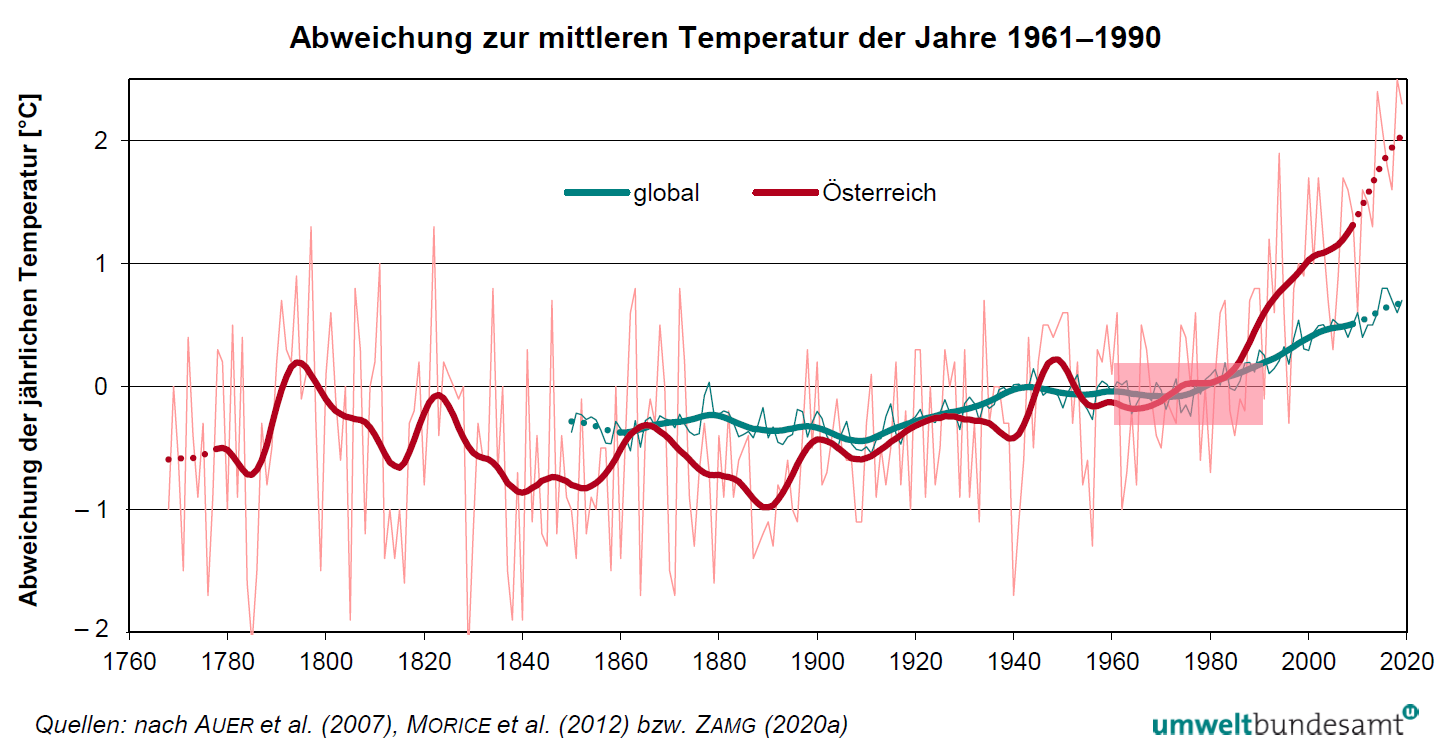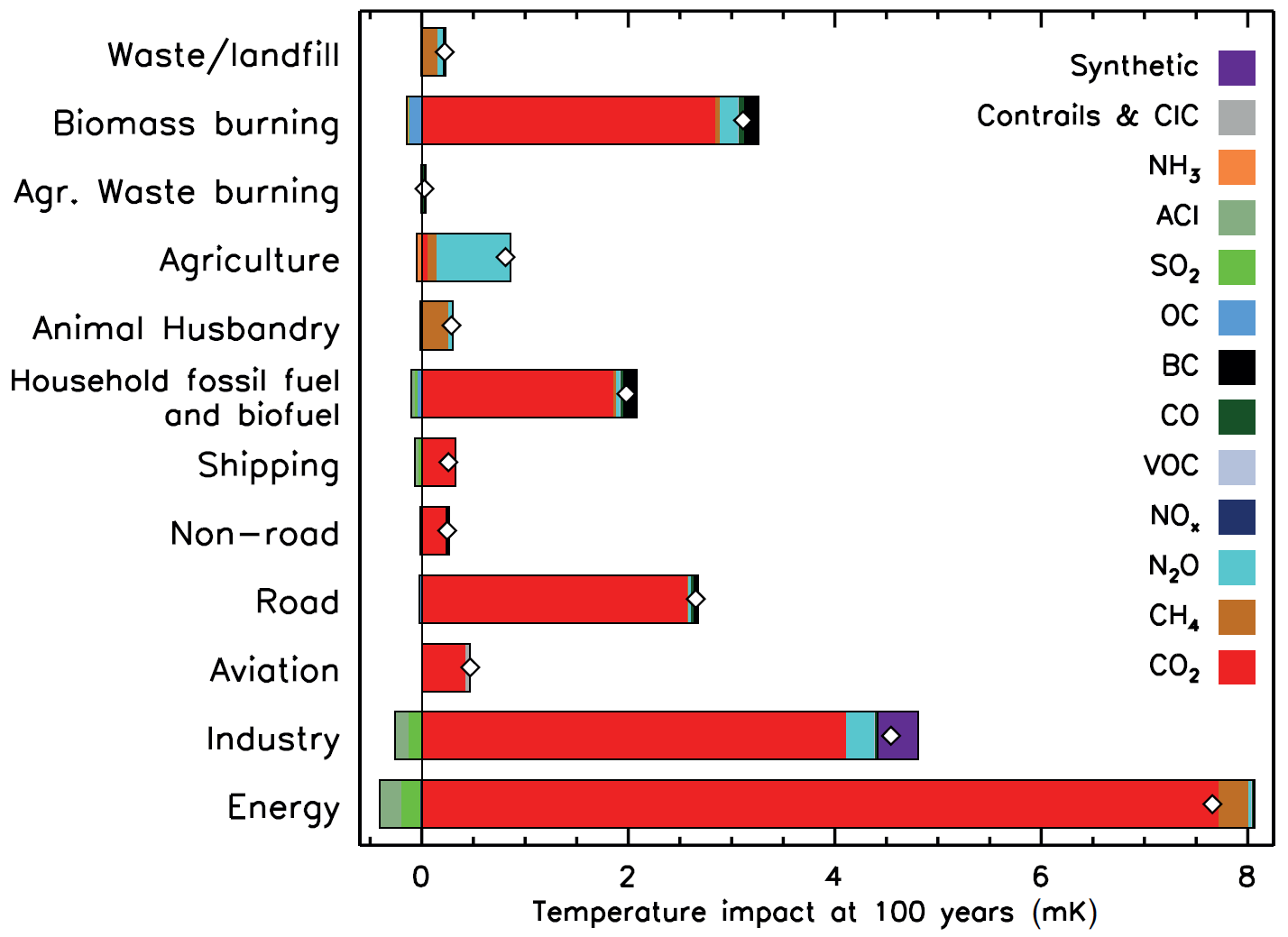The criteria used for the selection were the practical feasibility on farms and also the scientific validation of the effect on emission savings under different production and environmental conditions. An instrument was developed for a group of 26 potentially suitable solutions to enable a comparative cost-benefit analysis of the measures.
In general, climate impacts in agriculture can arise through emissions of greenhouse gases, but also through changes in greenhouse gas sinks and sequestered carbon stocks. Changes can occur with a positive or negative sign, for example through changes in land use and land management. The most important greenhouse gas overall and globally is CO 2 . 4 and N 2 O are also very important in agriculture According to the Kyoto Protocol, Austria was obliged to reduce greenhouse gases by 20% from 1990 to 2020; the savings targets for the future are even higher.
Climate models predict a temperature increase of around 4°C in Austria over the next 50 years, with an even greater increase in the Alpine regions. International climate protection efforts have the potential to significantly reduce the future warming effect. Austrian agriculture only contributes a small portion of the country's greenhouse gas emissions. However, technical processes occur in other economic sectors that can often be more easily adapted than is possible in agriculture tied to biological cycles. This makes it all the more valuable to build up knowledge about the possibilities, limits and costs of avoidance measures.

Interim report
An interim report on the project documents the potential solutions as well as the necessary methodological foundations with a focus on the area of calculation and accounting of greenhouse gas emissions and climate (protection) effects. If possible, all significant climate contributions should be included – and not just the emissions side. The approach therefore goes beyond territorial-sectoral greenhouse gas emissions reporting. The focus is on the agricultural business as a central economic entity from which important decisions regarding the future direction of agriculture come.
The measures cover the areas of arable and field fodder production, dairy cows, cattle fattening and small ruminants, monogastric animals, manure management, changes in land use as well as farm management, energy efficiency and energy production. In many respects, the approaches agree with the “Integrated National Energy and Climate Plan for Austria”, which, among other things, lists measures in the areas of fertilizer management, feeding strategies, husbandry systems, soil cultivation, humus stabilization and erosion protection as well as the generation of renewable energy and energy efficiency. The solutions discussed all concern primary agricultural production; other areas such as forestry and the processing of products must be treated separately.
Action planning
The following diagram is an example of how a single graphic does not reflect the complexity of sustainable climate action planning. Based on the diagram, agriculture would focus on the greenhouse gas N 2 O. Factors such as the level of observation (e.g. global agriculture vs. Austrian production), climate policy goals (e.g. 100-year temperature contribution) and sector allocation have a major influence.

Figure 2: Contribution of an emission in various sectors this year to the global temperature increase in 100 years (from IPCC 2013, p. 720)










